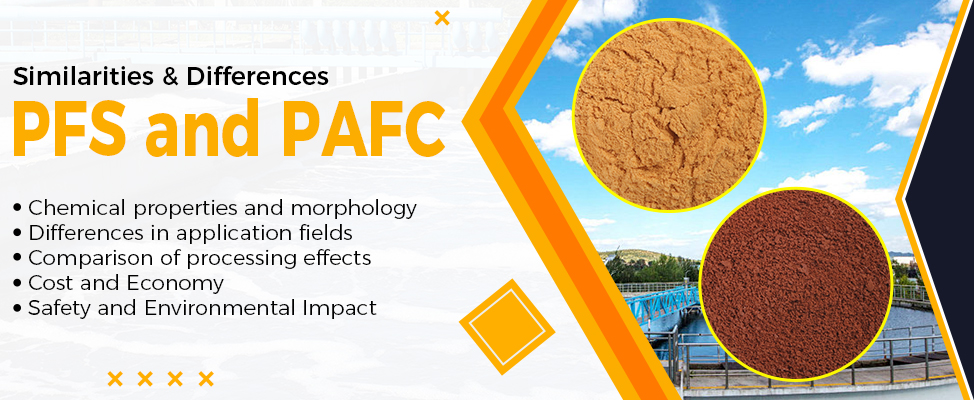
In modern water treatment systems, selecting the right coagulant can significantly impact treatment efficiency, effluent quality, and operational costs. Polyferric Sulfate (PFS) and Poly Aluminium Ferric Chloride (PAFC) are two widely used inorganic polymer coagulants. This article compares their composition, pH range, performance, application scenarios, and cost-effectiveness to guide users in making informed decisions.
PFS is based on ferric iron (Fe³⁺) and sulfate, forming a stable polymer structure that works well in turbid or high-organic-content water. It appears reddish brown or yellowish brown.
PAFC, on the other hand, combines the coagulation capabilities of aluminum and iron salts, delivering better charge neutralization and stronger flocculation, especially effective in removing phosphorus, color, and organic matter.
PFS performs best in waters with a pH between 4 and 11, especially in slightly acidic conditions.
PAFC works effectively in the pH range of 4 to 9, making it suitable for neutral or slightly alkaline water with greater adaptability to raw water fluctuations.
PFS has excellent rapid coagulation and sedimentation performance, making it ideal for high-turbidity wastewater with large amounts of suspended solids.
PAFC forms denser and more stable flocs, providing clearer effluent and better removal of COD and phosphorus, with less load on downstream treatment.
For high-turbidity industrial wastewater from mining, coal washing, or metal processing, PFS is a cost-effective choice offering fast settlement and reliable turbidity reduction.
For drinking water treatment, PAFC is widely used in municipal waterworks thanks to its low residuals and high removal rate of contaminants.
In cases of colored or high-COD wastewater, such as from dyeing, paper mills, or chemical industries, PAFC excels with its enhanced decolorization and pollutant removal ability.
In municipal sewage plants, both PFS and PAFC can be applied for phosphorus removal. The final choice depends on influent quality, effluent standards, and project budget.
PFS is more economical and suitable for projects with limited budgets or general effluent needs. However, PAFC, although slightly more expensive, offers better environmental performance, lower residuals, and less sludge generation.
Both PFS and PAFC are essential coagulants, but should be selected based on specific project needs.
Choose PFS for cost efficiency and high turbidity removal.
Choose PAFC for high-purity water or advanced treatment targets.

Please contact us for free quotation by form below. We promise the quickest response within 24 hours: